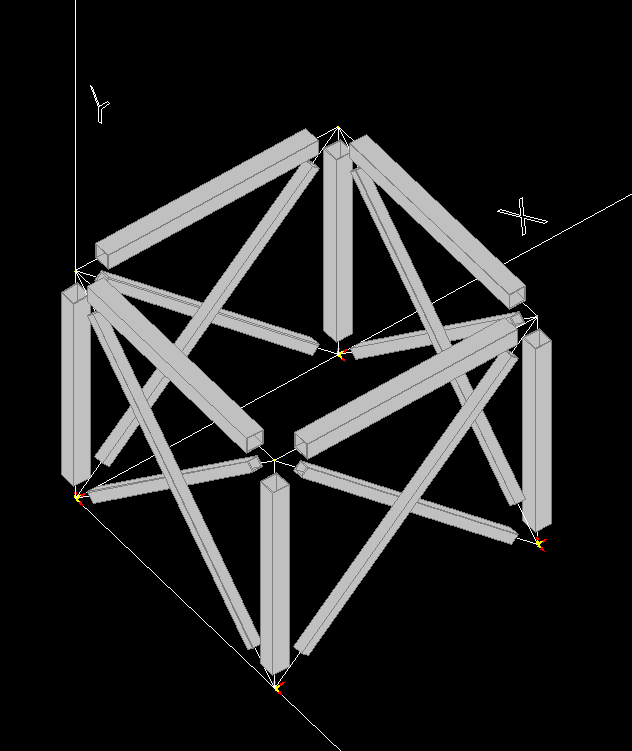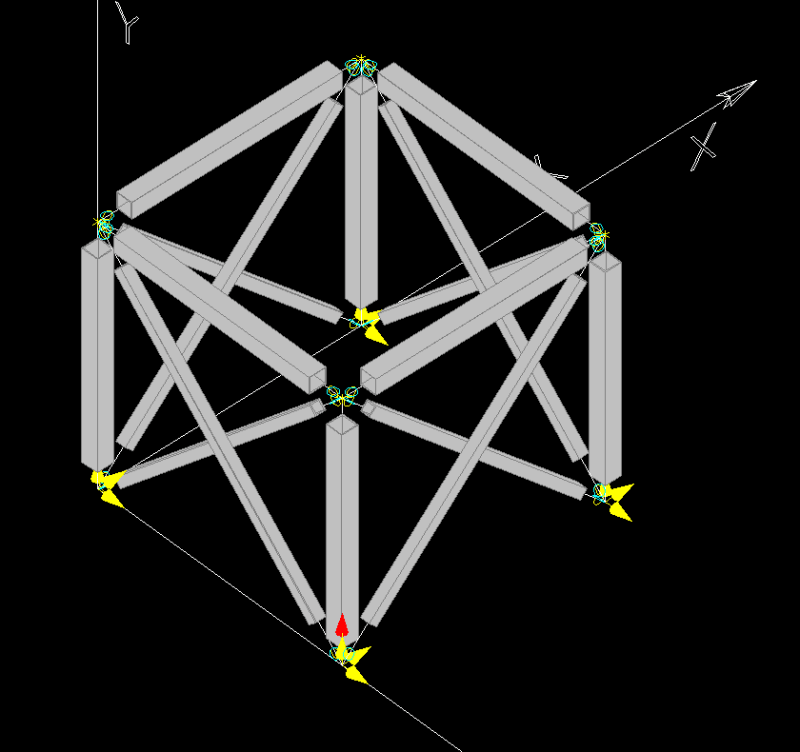Logan82
Structural
- May 5, 2021
- 212
Hi,
Do all 5 sides (4 sides and top) of a structure need to be braced if all connections are pinned and the supports at the base are pinned connections?
Here is an example to illustrate my question:
Would you say that the bracings colored in pink are necessary if all the connections are pinned? There are vertical loads (Y) and also wind loads in two directions (X and Z).
Without top bracings:

With top bracings:

Do all 5 sides (4 sides and top) of a structure need to be braced if all connections are pinned and the supports at the base are pinned connections?
Here is an example to illustrate my question:
Would you say that the bracings colored in pink are necessary if all the connections are pinned? There are vertical loads (Y) and also wind loads in two directions (X and Z).
Without top bracings:

With top bracings:



